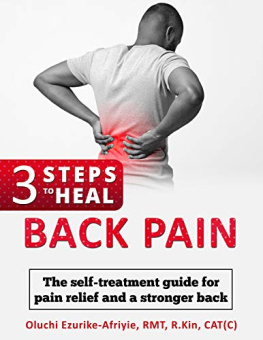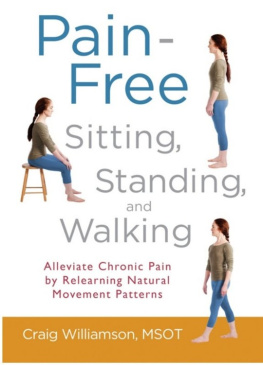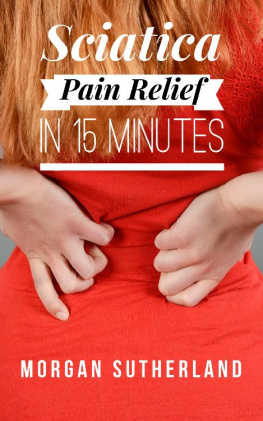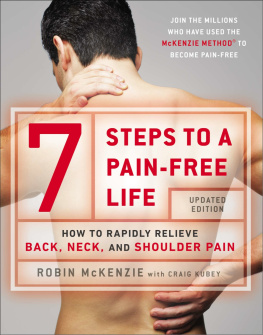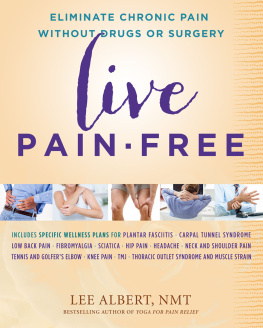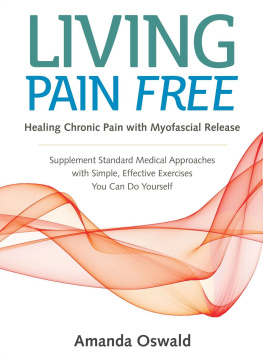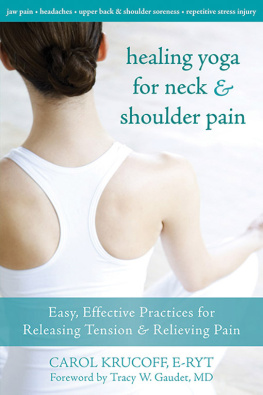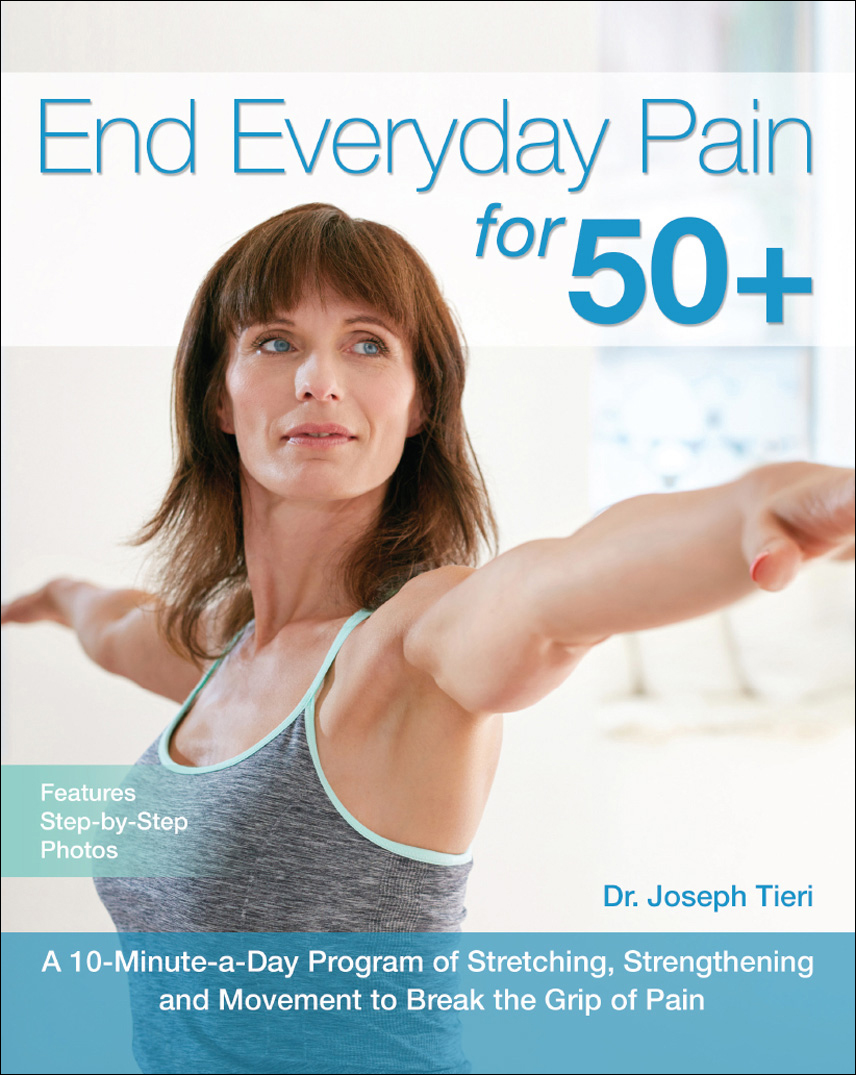
Text Copyright 2016 Joseph Tieri. Design and concept 2016 Ulysses Press and its licensors. Photographs copyright 2016 Rapt Productions except as noted below. All rights reserved. Any unauthorized duplication in whole or in part or dissemination of this edition by any means (including but not limited to photocopying, electronic devices, digital versions, and the Internet) will be prosecuted to the fullest extent of the law.
Published in the United States by
Ulysses Press
P.O. Box 3440
Berkeley, CA 94703
www.ulyssespress.com
ISBN13: 978-1-61243-621-0
Acquisitions editor: Casie Vogel
Managing editor: Claire Chun
Editors: Renee Rutledge and Lily Chou
Proofreader: Lauren Harrison
Indexer: Sayre Van Young
Cover design: what!design @ whatweb.com
Cover artwork: Jacob Lund/shutterstock.com
Interior design: Jake Flaherty
Production: Caety Klingman, Tainah Harvey
Interior artwork: Rapt Productions except (walking barefoo Kinga
Models: Norman Link, Kym Sterner, Joseph Tieri
Distributed by Publishers Group West
Please Note: This book has been written and published strictly for informational purposes, and in no way should be used as a substitute for consultation with health care professionals. You should not consider educational material herein to be the practice of medicine or to replace consultation with a physician or other medical practitioner. The author and publisher are providing you with information in this work so that you can have the knowledge and can choose, at your own risk, to act on that knowledge. The author and publisher also urge all readers to be aware of their health status and to consult health care professionals before beginning any health program.
To my wife Janice and my daughter Alexis for their love and support,
and to the many patients who entrusted me with their carethank you.
Table of Contents
Guide
Contents
If youre holding this book in your hands, its a safe bet that youre experiencing some sort of joint or muscular pain right now, or that youve suffered from it in the recent past. Maybe youre in your 50s or 60s and are beginning to feel some uncomfortable twinges when you spend a few hours in the garden or play a set of tennis. Maybe youve gone beyond twinges and wake up every morning with a stiff neck or a sore back. Maybe youve actually stopped picking up your grandchild because the shoulder pain is too great. Or maybe, like one 54-year-old patient of mine, you feel like youre living malady to malady and youre tired of it.
Whatever pain youre experiencingheadaches; neck, shoulder or back pain; hip, knee, or foot painthis book will help you. I wrote it because I searched for years for a book to recommend to my patients and I couldnt find one that had all the right ingredients. This is not to say that there arent some good books out there, but I can tell you with certainty that they wouldnt help most of the people that I treat and interact with on a daily basis. My patients are generally busy people who, although dedicated to becoming pain-free, dont have the time or inclination to spend an hour a day doing the numerous routines that typical pain-free books insist on, nor are they all that interested in the detailed anatomy and physiology lessons to which most of these books devote so much attention.
And the pain-free programs failed my patients for another reason, tooeven those patients that religiously spent the required time. Most of the books, I discovered, typically advocate one general approach or one solution to fix whatever ails you. The approach might be focused on stretching, or designed around improving posture, or devoted to strengthening weakened muscles. But whatever the focus, any single-pronged approach will fall short. First, when you narrowly focus on one method, devote the necessary time to following its recommendations, and then discover its not the right approach for you, well, youve spent a lot of time walking (or limping) down the wrong path without seeing any improvement. And second, I dont care how much you stretch, sit upright, or strengthen your back, if youre like my average patient, using just one approach almost certainly will not be enough to get you out of the situation in which you find yourself. Simply stated, to break the grip of misalignment and tension on the average adults body and end everyday pain, you need more than one approach or toolyou need some combination of three tools that Ive discovered to be essential. As Ill show you later, this is not only more effective, but also saves you time.
But before we talk about the toolsthree simple oneslets talk for a moment about why we need the tools in the first place. As a doctor whose life work is the study and hands-on treatment of the musculoskeletal system (the bones that make up our physical scaffolding, and the joints, muscles, tendons, ligaments, and other soft tissues that support that scaffolding and hold it together), Ive had the opportunity to observe and examine literally thousands of bodies over the course of my career. Its not unusual for me to treat a 15-year-old, a 35-year-old, a 55-year-old, and a 75-year-old in a single day. To be able to compare and contrast the bodies of these patients, to not only see but feel the effects of time on the human frame, has been nothing less than revelatory. And what Ive seen and felt is that, unless we take preventive measures, our bodies become gripped and molded into unhealthy positions and patterns as we age, and that these positions and patterns create tension in the body that result in the chronic and recurrent aches and pains, tears and strains, weakness and fatigue, and more serious medical problems that many middle-aged and older people experience on a regular basis.
Given all of the remarkable advances in medicine weve made over the last 100 years, it may seem odd that were still so far behind in our ability to properly care for the musculoskeletal system. Actually, it may not be so odd. Many life-saving advances have come about because of our ever-increasing ability to see inside the body using X-rays, MRIs, and other kinds of imaging technology.
Ironically, the indisputable value that these images provide in some cases has created an over-reliance on them in others. While diagnostic films and images are terrific tools for finding disease, theyre largely ineffective for addressing musculoskeletal pain and problems.
Likewise with pharmaceutical advances, which offer new hope for many kinds of illness but can only treat or mask the symptoms of musculoskeletal problems, not address the problems themselves. Perhaps worse still, when it comes to the human frame, todays technology has distanced modern physicians from the use of their most powerful diagnostic and therapeutic tooltheir handsand has divorced them from the fundamental concepts of prevention and cure.
Largely due to this imaging technology, physicians often blame a patients musculoskeletal aches and pains on arthritis, degenerative changes, bulging and herniated discs, spinal stenosis, and a host of other ills. In truth, as numerous studies have shown (and Ill share these with you in coming chapters), these conditions can be found on the films of many middle-aged and older people, including those who have no pain! Thats right. There are plenty of people out there with arthritis, bulging discs, and spinal stenosis that have absolutely no pain. Its surprising, isnt it?



